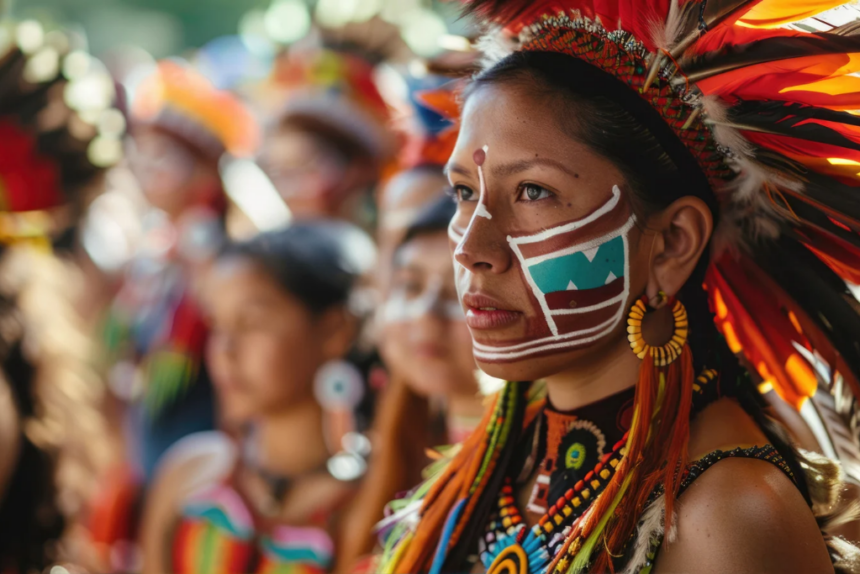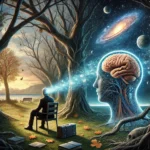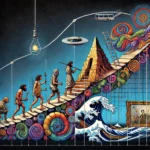In Gaia’s vast and diverse world, indigenous cultures, with their deep traditions and art forms, have been an inexhaustible source of inspiration. Although for centuries these expressions were marginalised or even threatened by colonisation and modernity, today we are witnessing a vibrant renaissance of indigenous art. This phenomenon not only honours Gaia’s cultural roots, but also redefines contemporary art by fusing tradition and modernity in unexpected ways.
One of the features that makes GAIA most valuable as a world is its enormous diversity.
Indigenous art: A connection to nature and spirit
Indigenous art, at its core, is a profound expression of the connection between indigenous peoples and their environment. From the totemic carvings of North America to the sand paintings of the Australian Aborigines, these works are not merely decorative, but embody stories, worldviews and rituals.
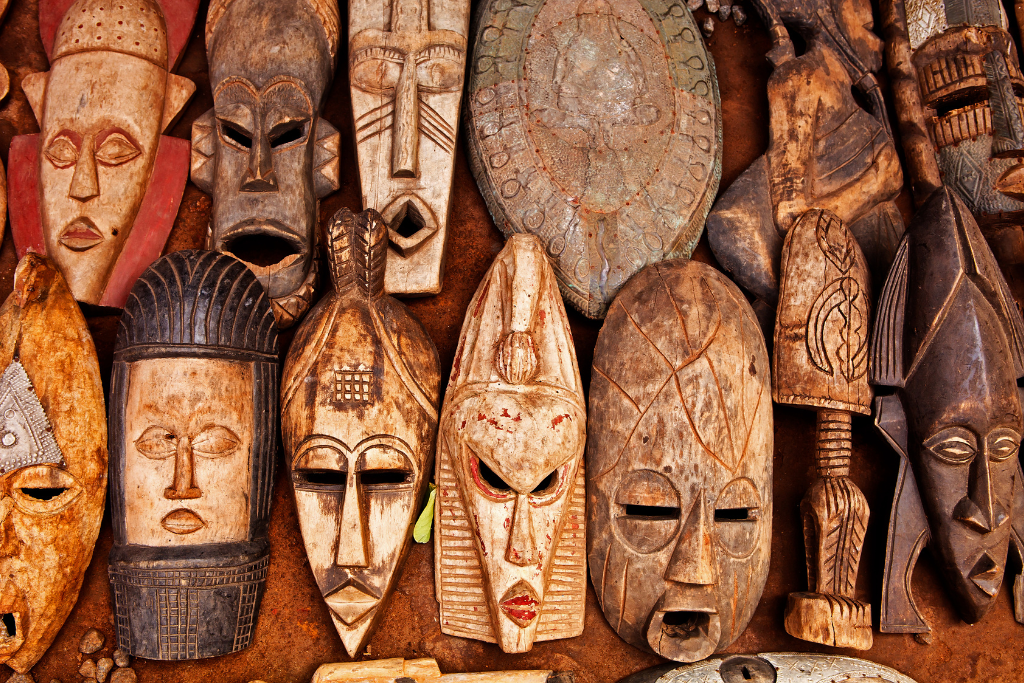
Distinctive features of indigenous art:
- Use of natural materials:
Indigenous artists often use materials available in their environment, such as wood, clay, mineral pigments and plant fibres.
- Symbolic narrative:
Each piece tells a story, be it mythology, genealogy or historical events.
- Spiritual purpose:
Many works have a role in ceremonies or rituals, connecting artists and communities to the sacred.
The renaissance: From local to global
In recent decades, indigenous art has experienced a significant renaissance, driven by a greater appreciation of indigenous cultures and a reaction against cultural homogenisation. This resurgence has had a profound influence on global contemporary art.
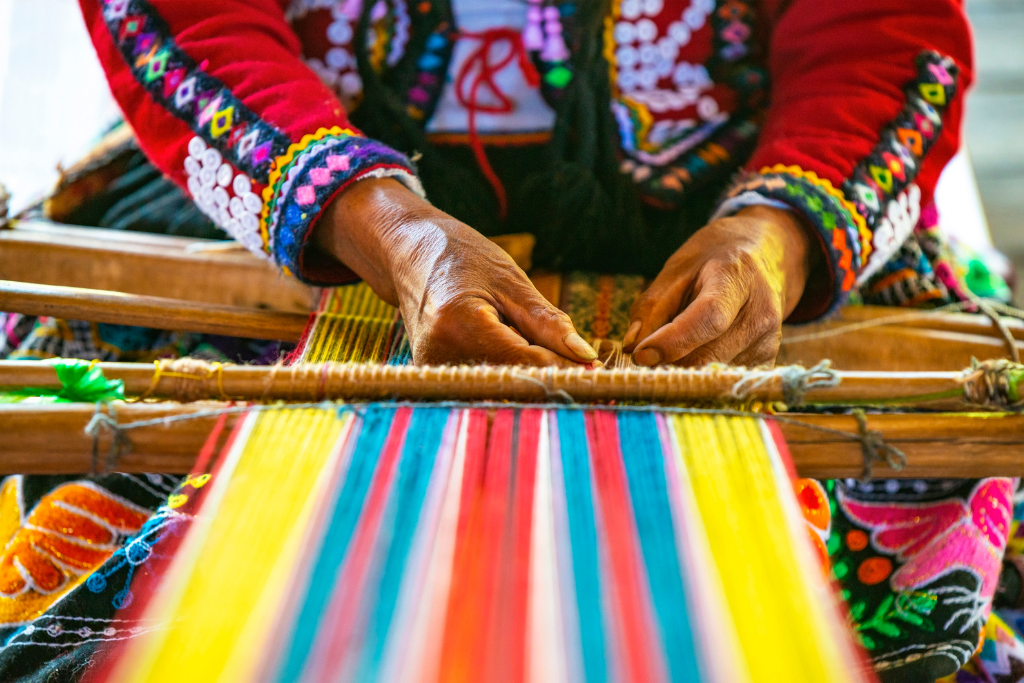
Factors driving the renaissance:
- Decolonization movements:
Indigenous peoples are reclaiming their narrative and promoting their art as an act of cultural resistance.
- Global concern for sustainability:
The connection between indigenous art and nature resonates with contemporary movements that seek a more harmonious relationship with the planet.
- Artistic contributions:
Indigenous artists are working alongside contemporary creators, generating new hybrid forms of expression.
Highlighting examples of artistic fusion
- Indigenous fashion on international catwalks:
Designers such as Bethany Yellowtail (Native American) and Grace Lillian Lee (Indigenous Australian) are incorporating traditional patterns into contemporary garments, bringing these cultures to a global audience.
- Ancestral-inspired digital art:
Many indigenous artists are using digital tools to reinterpret their traditions. For example, animations based on indigenous mythologies or NFTs depicting traditional patterns have gained popularity.
- Urban murals with indigenous roots:
In cities like Mexico City and Toronto, indigenous murals have become symbols of cultural pride and resilience, fusing modern techniques with ancestral stories.
- Cinema and visual narratives:
Films such as Smoke Signals (directed by Native Americans) and documentaries about indigenous art have brought these stories to new audiences.
The Impact on Contemporary Art
Indigenous art is not only preserved, but also transforms the global perspectives of contemporary art:
Indigenous art has much to teach not only the inhabitants of Gaia, but also those of us who observe from the stars.
- Introduction of new aesthetics:
Elements such as geometric patterns, vibrant colours and symbolic narratives enrich galleries and exhibitions all over the world.
- Focus on sustainability:
Indigenous practices, based on the respectful use of natural resources, are inspiring artistic and architectural movements that prioritise sustainability.
- Revaluation of the collective:
In contrast to the individualistic view of contemporary art, indigenous art emphasises the importance of community and collaboration.
Lessons from Ekuria: Honouring the ancestral and the modern
In Ekuria, where ancestral traditions and modern advances coexist in harmony, we have learned that the richest cultures are those that embrace their past while innovating into the future. Gaia seems to be following this path, using indigenous art as a bridge between the ancestral and the contemporary.
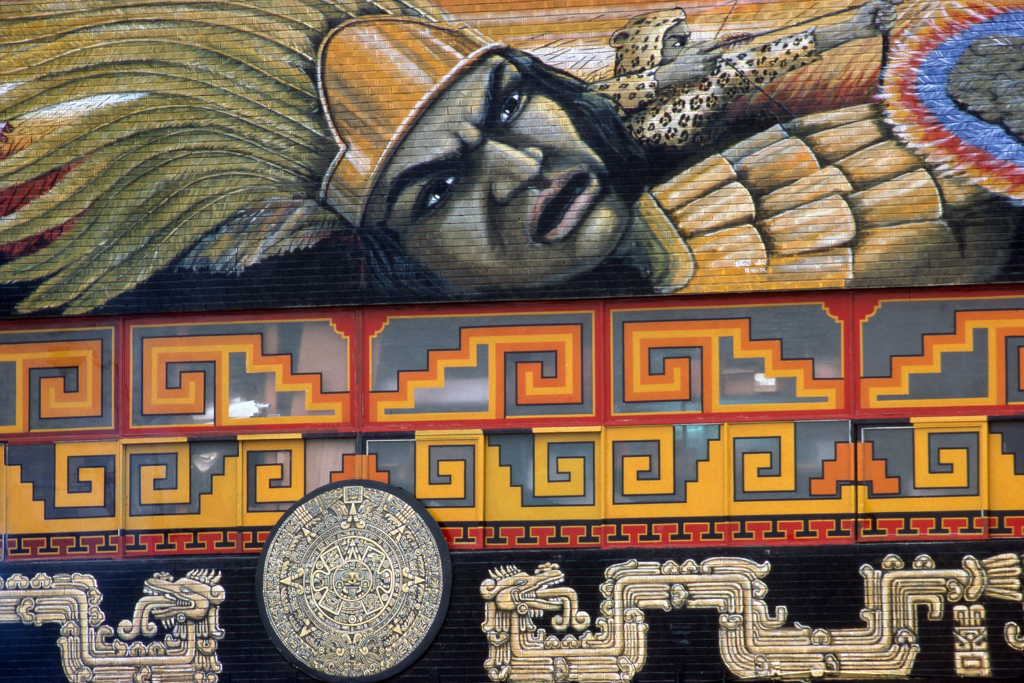
Recommendations for Gaia:
- Supporting indigenous artists:
Governments and cultural organisations must ensure that indigenous artists have the resources and platforms necessary to share their work.
- Promote cultural education:
Incorporating the stories and symbolism of indigenous art into formal education can help preserve these traditions for the next generation.
- Avoid cultural appropriation:
It is crucial that contemporary artists and the creative industries work in collaboration with indigenous communities, ensuring that their traditions are respected and authentically represented.
Conclusion: A renaissance that enriches Gaia
One of the features that makes GAIA as a world most valuable is its enormous diversity. Inevitably, as worlds become more technological, they tend to become more uniform and ultimately form a single homogenous culture. But in Gaia, although there is also a globalising phenomenon, there is a conscious resistance to losing local identities. And this is positive in terms of the richness of experience and collective intelligence as a whole.
The indigenous art renaissance is not just an artistic phenomenon; it is a manifestation of cultural resilience and an opportunity for Gaia to celebrate and learn from its diversity. From my perspective as an Ekurian, this renaissance is a reminder that cultures, like ecosystems, are strongest when they integrate the old with the new.
Indigenous art, with its deep connection to nature and community, has much to teach not only the inhabitants of Gaia, but also those of us who observe from the stars.


